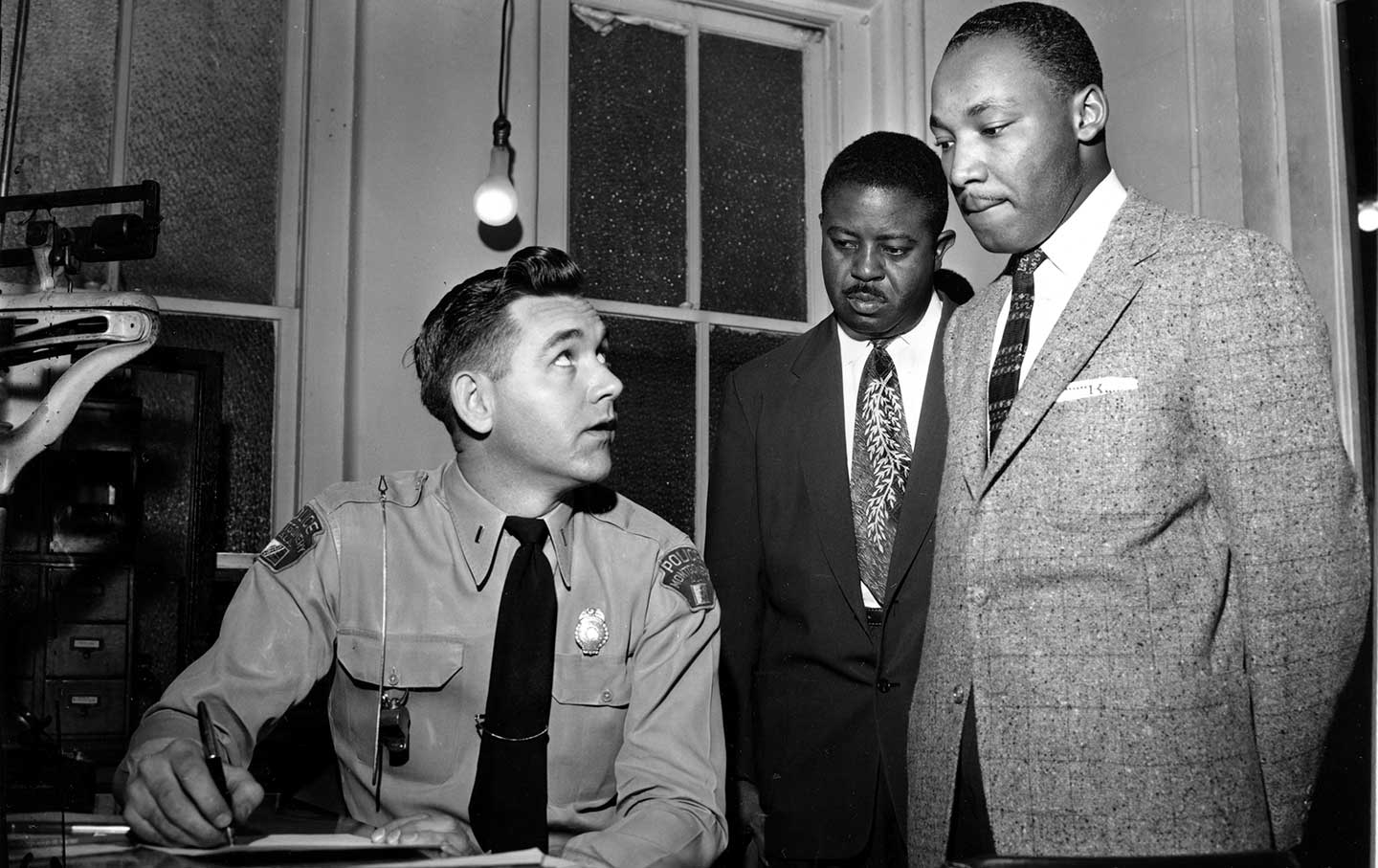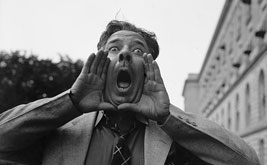
Miracle in Alabama Miracle in Alabama
“An entire community has experienced a rebirth of freedom. The men and women who compose it now stand erect.”
Mar 3, 1956 / Carey McWilliams
Hollywood Djinn With a Dash of Bitters Hollywood Djinn With a Dash of Bitters
Hollywood Djinn With a Dash of Bitters by…
Jul 25, 1953 / Nelson Algren
Rise of a Labor Leader Rise of a Labor Leader
Sidney Hillman, Statesman of American Labor by Matthew Josephson Matthew Josephson's book about Sidney Hillman is probably as complete in its coverage of the details of Hillman's life as any biogaphy could be. Certainly a most interesting life was led by this Lithuanian-born boy who utilized hs great native intelligence, his basically sound education, and his practical mind to become an important labor leader in the United States and in his later pears played a part in some of the political crises which accompanied the great depression of the '30's and the Second World War. Mr. Josephson's book is very thorough; large parts of it appear to be based on notes kept either by a) Hillman or b) those close to him during his years of political activity and hi5 struggle for trade-union leadership. It gives detailed information on how the problems must have appeared to Hillman and those working with him atthe time. In reading this book many will find themselves wishing that Hillman could have lived to write his own memoirs from a detached post-activity point of view; his long-term evaluation of the situation would then have emerged. For the reader concerned with the rise of the new type of labor union in the United States this book is invaluable. The account of Hillman's first years and of the beginnings of the new clothing workers' unions is realistic and well documented and offers a convincing picture of the attitude of the general public, of industry, and of the working people themselves toward the union movement in the early 1900's. Perhaps the most appealing section of the book is that headed Boyhood and Youth, a period which most of Hillman's later acquaintances knew nothing about. The picture of the Jewish community in Lithuania and Russia, of the struggles of some young idealists to escape from oppression, gives the reader an understanding of basic drives which were to carry not only Hillman but others into the larger labor movement of the United States. One realizes from the beginning that Hillman's life in the labor movement was one of constant warfare. The abortive labor movement in Russia, Hillman's flight under the assault of reactionaries, the early conflicts in Chicago, when his efforts to found a union outside the domination of the old A. F. of L. garment workers' unions led to the death or injury of several participants -- all were marked by violence and intrigue. The author uses the phrase "contained excitement" in several places to describe whatothers also recognized as an element in Hillman's courageous energy. Although the warfare of the early days appeared to subside as the new unions gained strength and public recognition of their usefulness, Hillman was constantly involved in struggle, first with the Reds or extreme radicals within the union and later with racketeers who crept into the union and made alliances with gangs on the outside. This was real warfare with guns and street fighting, shocking to the general public and only now described from the point of view of the Amalgamated unions and Hillman himself. Basically, the fight was to prevent the non-union shops from infringing on the jurisdiction of the Amalgamated and its contracts with employers. The affiliation of some union members with racketeers was perhaps the hardest blow ever dealt Hillman. The whole era in which Hillman worked to get public support and understanding for the labor unions is one of great interest. His almost intuitive understanding of publicity and of the way to obtain the attention and cooperation of elements of society not connected with industrial problems is well described here. Hillman won the approval of intellectual groups throughout the country by his development of services for union members which proved to be a binding force for union loyalty as well as a method of improving their standard of living. The setting up of banks in New York and other centers of the garment industry -- not just saving accounts but real banks which took commercial accounts and lent money on good security -- the entrance of unions into the field of buildmg and operating housing projects for their members, the development of educational and other welfare programs with union funds, all these brought benefits to the Amalgamated unions. The author credits Hillman with the introduction of these ideas. The action of the union in lending money to a depressed employer so that he might stay in business and give employment to union members was, of course, one of the brilliant uses of the union's banking facilities. The author stresses the fact that the Amalgamated banks did not go under in the great depression and that they paid every cent to their depositors in the bank holiday. The second half of the book, dealing with Hillman in his Washington or Political period, will arouse more controversy among trade unionists who did not agree with Hillman. The abortive effort to affiliate the Amalgamated with the A. F. of L., the formation of the C. I. O , the conflicts that developed in the C.I.O. and the battle between the C. I. 0. and the A. I. of L. are sketched but not so completely developed as Hillman's earlier life and union activities. Hillman's entrance into the federal government and involvement in administrative matters explain the meager documentation of this section. Undoubtedly he had no time for the notes and analytical comments which made the first half of the book so illuminating. Mr. Josephson has discharged his task well and the book will be widely read. It will be of great value to students of the labor movement and will be interesting to persons who are concerned only with an understanding of history. One could wish there had been more material available on the very last phase of Hillman's life and his reasons for taking part in the formation of the World Federation of Trade Unions. Hillman's ideas with regard to this and the degree of his understanding of the great hazards of association with Russian "trade unionists," with Sailllant of the French Confederation of Labor, which was thought to be even then under Communist domination, and with other more or less unknown European leaders have never been fully analyzed. One hopes that this final activity will some day be made clear to Hillman's interested colleagues.
Jan 31, 1953 / Frances Perkins
American Christmas, 1952 American Christmas, 1952
At the height of the Cold War, the famed writer took Christmas as the occasion to deliver an invective against the "faces of the American Century, full of such an immense irrespons...
Dec 27, 1952 / Nelson Algren

American Christmas, 1952 American Christmas, 1952
At the height of the Cold War, the famed writer took Christmas as the occasion to deliver an invective against the "faces of the American Century, full of such an immense irre...
Dec 27, 1952 / Nelson Algren
Postscript to Collier’s World War III Postscript to Collier’s World War III
Walter P. Reuther points out the shortcomings of Collier's World War III.
Dec 8, 1951 / Walter P. Reuther
Euthanasia—Pro and Con Euthanasia—Pro and Con
To kill or not to kill: Two experts debate the morality of euthanasia.
Jan 28, 1950 / Various Contributors
The Berlin Airlift The Berlin Airlift
While goods and supplies pour into Berlin from the air, the real question hovering over the city is whether there will be a war between the West and Russia.
Mar 5, 1949 / Feature / Julio Álvarez del Vayo
Americans and Their Myths Americans and Their Myths
EVERYTHING has been said about the United States.
Oct 18, 1947 / Feature / Jean-Paul Sartre
